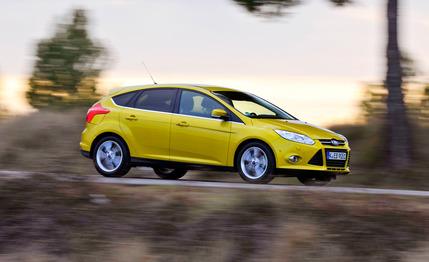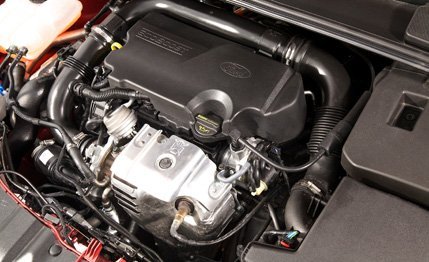 First Drive Review
First Drive Review
With its EcoBoost engines, Ford feels it really has a substitute for cubic inches, and it’s taking the turbocharged, direct-injected concept to extremes. If you think the naturally aspirated 1.6-liter engine in the subcompact Fiesta is, like the car, a touch on the small side, you will be amazed—maybe horrified—to learn that its replacement has three cylinders and a displacement of less than one liter: 999 cc, to be precise. (This new EcoBoost engine will soon find its way into the U.S.-market 2014 Fiesta.)
In Europe, Ford has chosen to introduce the 1.0-liter engine in the Focus, the Fiesta’s bigger brother. That suggests an econobox of the worst kind, unacceptable to American buyers even at a time of rising fuel prices. But this is one of those rare occasions when reality vastly exceeds expectation—the 1.0-liter is equal or superior to the 1.6 in every way. The only remaining task is to convince customers that bigger isn’t always better.
Little Engine, Big on Tech
Ford’s substitute for cubic capacity is technology, and a lot of it. The engine (code-named the Fox but marketed as the 1.0 EcoBoost) includes all the latest features of large and powerful six- and eight-cylinder powerplants in premium cars, scaled down into a miniature three-cylinder package.
It has direct injection, turbocharging, and variable timing for the inlet and exhaust camshafts. We drove a Focus five-door with the 123-hp version coupled to a six-speed manual gearbox (a 99-hp version will be offered later). The naturally aspirated four-cylinder Duratec 1.6-liter in the European Focus has the same power output, but the 1.0-liter EcoBoost produces more torque (125 lb-ft) from lower revs (1400) and has an overboost feature that pushes torque to 148 lb-ft.

With the new baby engine, performance—we estimate a 0-to-60-mph run of 10.1 seconds, and Ford claims a top speed of 120 mph—is virtually the same as with the Focus 1.6. Fuel consumption, as measured in the European driving cycle, improves by about 18 percent compared with that of the 1.6; we estimate the car would achieve something like 32 mpg city and 41 highway in EPA testing.
The indicated average for our test on U.K. roads, driving briskly but not flat-out, was 32 mpg. This suggests that, as usual, there is a discrepancy between laboratory and real-world conditions, which is especially true of turbocharged cars. Ford says the little engine “provides the opportunity for exceptional fuel economy” but accepts that it can’t be achieved if you make use of the full performance envelope.